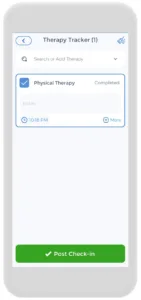 Hemorrhoids – a topic that many shy away from, yet one that affects millions of people worldwide. These pesky little veins in the lower rectum, similar to varicose veins, can cause discomfort, pain, and even bleeding during bowel movements. They’re caused by increased pressure on the veins in the pelvic and rectal area, which can occur due to a variety of factors, such as straining during bowel movements, pregnancy, or sitting for extended periods of time.
Hemorrhoids – a topic that many shy away from, yet one that affects millions of people worldwide. These pesky little veins in the lower rectum, similar to varicose veins, can cause discomfort, pain, and even bleeding during bowel movements. They’re caused by increased pressure on the veins in the pelvic and rectal area, which can occur due to a variety of factors, such as straining during bowel movements, pregnancy, or sitting for extended periods of time.
But fear not, there are ways to manage and treat hemorrhoids. Over-the-counter creams and ointments can provide relief, as can lifestyle changes such as increasing fiber intake and staying hydrated. In severe cases, surgery may be required.
It’s important to understand the different types of hemorrhoids, whether they’re internal or external, and the symptoms they can cause. Itching, pain, and bleeding are all common symptoms. And while flar
e-ups can be uncomfortable, there are ways to manage them, including identifying common triggers and taking steps to prevent them in the first place.
Don’t let hemorrhoids hold you back – by staying informed and taking steps to manage and prevent flare-ups, you can live your life without the discomfort and pain.[1]
Hemorrhoids: Understanding the Basics
What are Hemorrhoids
Hemorrhoids can cause a real pain in the backside. But what exactly are they? Simply put, hemorrhoids are swollen veins in the pelvic and rectal area. They’re caused by increased pressure on the veins, which can occur due to a variety of factors such as straining during a bowel movement, pregnancy, or sitting for extended periods of time.
Hemorrhoids are a common problem affecting millions of people worldwide. In fact, it is estimated that up to
50% of adults will experience hemorrhoids at some point in their lives. While they can affect people of all ages, they are more common in older adults. Hemorrhoids are also slightly more common in men than in women. Despite their prevalence, many people are hesitant to seek treatment or discuss their symptoms with a healthcare provider due to the stigma associated with hemorrhoids. It’s important to remember that hemorrhoids are a common and treatable condition, and seeking help can lead to relief from discomfort and pain.
Types of Hemorrhoids
Hemorrhoids are swollen veins in the pelvic and rectal area that can cause discomfort and pain. There are two types of hemorrhoids: internal and external.
Internal Hemorrhoids
Internal hemorrhoids are located inside the rectum, and are typically painless and may not cause any symptoms. However, when internal hemorrhoids become enlarged, they can cause symptoms such as bleeding, itching, or discomfort around your anus. Causes of internal hemorrhoids include increased pressure on the veins in the pelvic and rectal area, which can occur due to straining during bowel movements, pregnancy, or sitting for extended periods of time. Other factors that may contribute to the development of internal hemorrhoids include a low-fiber diet, obesity, and a sedentary lifestyle.
External Hemorrhoids
An external hemorrhoid is located outside the rectum and anus, and can be felt as a lump or swelling in the anal region. They can cause pain, itching, and bleeding, especially during a bowel movement. External hemorrhoids are typically caused by increased pressure on the veins in the pelvic and rectal area, which can occur due to straining during bowel movements, pregnancy, or sitting for extended periods of time. While external hemorrhoids can be uncomfortable, they’re generally easier to diagnose and treat than internal hemorrhoids.
It’s important to discuss treatment options with a healthcare provider to determine the best course of action for your specific case. Lifestyle changes, such as increasing fiber intake, staying hydrated, and avoiding prolonged sitting, can also help prevent external hemorrhoids.
Causes of Hemorrhoids
Hemorrhoids are caused by increased pressure on the veins in the pelvic and rectal area. This excess pressure can occur due to a variety of factors.
- Straining during a bowel movement can cause increased pressure on the veins in the pelvic and rectal area, leading to the development of hemorrhoids.
- Pregnancy: Pregnant women have increased pressure on these veins due to the weight of the growing fetus, leading to the development of hemorrhoids.
- Sitting for extended periods of time can contribute to the development of hemorrhoids by increasing pressure on the veins in the pelvic and rectal area.
- Constipation due to low intake of water or other fluids can also cause hemorrhoids and an anal fissure.
Keep in mind that this is not a comprehensive list of all the things that can cause hemorrhoids. Furthermore, just because some of these things apply to you, it does not guarantee that you will get a hemorrhoid.
Symptoms and Signs of Hemorrhoids
Symptoms and signs of hemorrhoids may include:
- Itching: Hemorrhoids can cause itching in the anal region due to irritation caused by enlarged veins. Although tempting, be careful when you scratch as you could cause a burst.
- Rectal Pain: Hemorrhoids can be painful, especially during bowel movements or when sitting for long periods of time. This pain can be very severe in some cases.
- Rectal Bleeding: Hemorrhoids can cause rectal bleeding during bowel movements due to irritation and inflammation of the veins in the rectal area. This will typically look like bright red blood.
- Swelling or lump: Hemorrhoids can cause a lump or swelling in the anal region due to enlarged veins.
Not all hemorrhoids cause symptoms, and some people may not even realize they have them. If you experience any of these symptoms, it’s important to discuss them with a healthcare provider to determine the best course of treatment for your specific case.
Diagnosis of Hemorrhoids
A healthcare provider can diagnose hemorrhoids by performing a physical exam and asking about your![]() symptoms. They may also perform a digital rectal exam on you. While it may be uncomfortable or painful, it is important in the diagnosis of hemorrhoids. In some cases, additional tests such as a colonoscopy may be needed to rule out other conditions. After a diagnosis, a doctor can help you deal with your uncomfortable hemorrhoids.
symptoms. They may also perform a digital rectal exam on you. While it may be uncomfortable or painful, it is important in the diagnosis of hemorrhoids. In some cases, additional tests such as a colonoscopy may be needed to rule out other conditions. After a diagnosis, a doctor can help you deal with your uncomfortable hemorrhoids.
Hemorrhoid Treatment
Hemorrhoids are a common condition that can impact your quality of life, but there are several treatment options available to alleviate the symptoms. Over-the-counter creams and ointments are often the first choice for mild cases, as they can provide relief from itching, burning, and discomfort. Another option is sitz baths, which are warm, shallow baths that can help soothe the affected area. For more severe cases, prescription-strength creams, suppositories, or even surgery may be necessary to address the issue.
A healthcare provider can help determine the best course of action for your specific situation. They may also recommend dietary changes, such as consuming more fiber and to drink plenty of water. In some cases, it may be necessary to avoid specific foods, such as dairy or spicy foods, as they can exacerbate the condition. Additionally, some people find that incorporating regular exercise into their routine can help prevent or alleviate symptoms.
Prevention of Hemorrhoids
Hemorrhoids are a common condition that can be prevented by making simple lifestyle changes. Increasing fiber intake is essential to keeping stools soft and easy to pass, thus reducing the risk of developing hemorrhoids. In addition, staying hydrated is crucial to preventing chronic constipation too, which can put pressure on the rectal veins and cause hemorrhoids. Prolonged sitting can also contribute to hemorrhoids, so it’s important to take breaks and walk around periodically. In addition, avoiding straining during bowel movements can help prevent hemorrhoids from occurring. If you do experience constipation, it’s important to seek treatment in a timely manner to avoid putting undue pressure on the rectal veins.[2][3][4]
Hemorrhoid Flare Ups: Exacerbations of the Symptoms
Hemorrhoid flare ups can be extremely painful and uncomfortable, but with proper management, you can find relief. A flare-up occurs when the symptoms of hemorrhoids become more severe than usual. These symptoms can include itching, pain, and bleeding.
Definition of a Flare Up
A flare up is a sudden increase in the severity of hemorrhoid symptoms, such as itching, pain, and bleeding. It can occur due to a variety of factors, such as straining during bowel movements, pregnancy, or sitting for extended periods of time.
Common Triggers for Hemorrhoid Flare Ups
There are a variety of factors that can contribute to the onset of hemorrhoid flare-ups. These triggers can be both internal and external, and range from lifestyle choices to natural physical changes. Here are some of the most commonly recognized factors:
- Straining during bowel movements: This can put undue pressure on the anal region, causing hemorrhoids to form.
- Prolonged sitting: Sitting for extended periods of time can also put pressure on the anal area, particularly if you are sitting on a hard surface or in a position that requires you to lean forward.
- Pregnancy: Hormonal changes during pregnancy can cause blood vessels to dilate, leading to swollen veins in the anal region.
- Constipation: Straining to pass hard stools can irritate the anal area, leading to the development of hemorrhoids.
- Diarrhea: Frequent bowel movements can also cause irritation and inflammation in the anal region.
- Low-fiber diet: A diet that is low in fiber can result in hard stools and constipation, which can in turn lead to hemorrhoids.
- Obesity: Being overweight puts added pressure on the anal area, increasing the likelihood of hemorrhoids.
- Aging: As we age, the tissues in our anal area become less elastic and less able to withstand pressure, making it more likely for hemorrhoids to form.
Symptoms of Hemorrhoid Flare Ups
The symptoms of a hemorrhoid flare-up can be uncomfortable and painful. Some of the most common symptoms include:
- Hemorrhoids can cause a variety of symptoms that can be uncomfortable and painful. Here are some more details about each of the symptoms listed:
- Itching in the anal region: Hemorrhoids can cause itching in the anal region due to irritation caused by enlarged veins. Itching can be relieved by keeping the area clean and dry, and using a soothing cream or ointment.
- Pain during bowel movements: Hemorrhoids can be painful, especially during bowel movements or when sitting for long periods of time. This pain can range from mild to severe, and may be relieved by taking a warm bath or using a numbing cream.
- Bleeding during bowel movements: Hemorrhoids can cause bleeding during bowel movements due to irritation and inflammation of the veins in the rectal area. This bleeding may be bright red or darker in color, and should be evaluated by a healthcare provider.
- Swelling or lump in the anal region: Hemorrhoids can cause a lump or swelling in the anal region due to enlarged veins. This lump may be painful or uncomfortable, and can be relieved with sitz baths or over-the-counter creams and ointments.
If you experience any of these symptoms, it’s important to discuss them with a healthcare provider to determine the best course of treatment for your specific case.
Complications of Hemorrhoid Flare Ups
Most hemorrhoids are rarely dangerous. However, if left untreated, a strangualted hemorrhoid or bulging hemorrhoids may occur. More severe complications include the following.
Anemia
Anemia is a condition in which the body does not have enough red blood cells to carry oxygen to its tissues. Hemorrhoids can cause bleeding during bowel movements, which can lead to anemia if left untreated. Symptoms of anemia may include fatigue, weakness, and shortness of breath. Treatment for anemia typically involves iron supplements or changes to the diet to increase iron intake.
Thrombosis
Thrombosis is a blood clot that forms inside a blood vessel. Hemorrhoids can become thrombosed, which means that a blood clot has formed inside the vein. A thrombosed hemorrhoid cause severe pain and swelling in the affected area. Treatment for thrombosed hemorrhoids may involve surgical removal of the clot or entire hemorrhoid.
Infection
Infection can occur if bacteria enter the bloodstream through an open wound or sore. Hemorrhoids can become infected if they are not kept clean or if they are scratched or irritated. Symptoms of infection may include fever, chills, and redness or swelling in the affected area. Treatment for infection typically involves antibiotics or other medications to control the infection.
It’s important to seek medical attention if your hemorrhoid flare-up is severe or does not improve with home remedies. Your healthcare provider can help determine the best course of treatment for your specific case and help prevent complications from occurring.
Management of Hemorrhoid Flare Ups
The management of hemorrhoid flare-ups can involve a combination of home remedies and medical treatments. Some of the most effective home remedies include:
- Sitz baths: Soaking the affected area in warm water for 10-15 minutes, 2-3 times a day can soothe the hemorrhoids and reduce inflammation. Adding Epsom salts or essential oils can further enhance the benefits of a sitz bath.
- Topical creams and ointments: Over-the-counter creams and ointments containing hydrocortisone or witch hazel can provide relief from itching, burning, and discomfort. However, prolonged use of these products is not recommended as they can cause skin thinning and other side effects.
- Increased fiber intake: A diet high in fiber can soften stools and make them easier to pass, reducing the risk of developing hemorrhoids. Consider consuming more fruits, vegetables, whole grains, and legumes. You can also take a fiber supplement to add fiber to you diet slowly.
- Staying hydrated: Drinking plenty of water and other fluids can help prevent constipation, which can put pressure on the rectal veins and cause hemorrhoids.
- Avoiding prolonged sitting: Taking breaks and walking around periodically can help reduce pressure on the rectal area and anus to prevent hemorrhoids. If sitting for extended periods of time is necessary, it is recommended to use a cushion or pillow to provide additional support.
Remember, prevention is key. By making these simple lifestyle changes and managing your symptoms, you can find relief from hemorrhoid flare-ups and live your life without discomfort and pain.
Severe Hemorrhoid Flare Up
For more severe cases, medical treatments such as rubber band ligation or hemorrhoidectomy may be necessary.
Rubber band ligation is a medical treatment for hemorrhoids that involves placing a small rubber band around the base of the internal hemorrhoid, cutting off its blood supply and causing it to wither and fall off within a few days. This procedure is typically used for internal hemorrhoids that protrude during bowel movements.
Hemorrhoidectomy is a surgical procedure to remove hemorrhoids. It is often used for severe or prolapsed hemorrhoids that do not respond to other treatments. During the procedure, the hemorrhoid tissue is removed, and the remaining tissue is sutured closed. Hemorrhoidectomy is typically performed under general anesthesia and may require a brief hospital stay for recovery.
Using an App to Manage Hemorrhoid Flare Ups
Having a hemorrhoid management plain is crucial, and the CareClinic app can help with that. You can use the app as your journal. Just go to the diary section of the app and enter your daily symptoms, medications, and triggers as they occur. There are also specific sections on the app to track each of these. Next time you visit the doctor, this information will be handy in your pocket.
use the app as your journal. Just go to the diary section of the app and enter your daily symptoms, medications, and triggers as they occur. There are also specific sections on the app to track each of these. Next time you visit the doctor, this information will be handy in your pocket.
The app also has a medication section where you can precisely track the doses you are taking and receive reminders on when to take each medication. We know how difficult but important keeping track of your medications is, so we hope to make it as easy and streamlined as possible.
In conclusion, hemorrhoids are a common and treatable condition that affects millions of people worldwide. Understanding the different types of hemorrhoids, their causes, symptoms, and treatment options is crucial in managing and preventing flare-ups. By making lifestyle changes, such as increasing fiber intake and staying hydrated, and seeking medical treatment when necessary, you can alleviate the discomfort and pain associated with hemorrhoids. Don’t let hemorrhoids hold you back – take control of your health and live your life without discomfort and pain.
Sources:
- https://www.hopkinsmedicine.org/health/conditions-and-diseases/hemorrhoids
- https://www.mayoclinic.org/diseases-conditions/hemorrhoids/symptoms-causes/syc-20360268
- https://www.health.harvard.edu/diseases-and-conditions/hemorrhoids_and_what_to_do_about_them
References
- “Hemorrhoids | Johns Hopkins Medicine”. https://www.hopkinsmedicine.org/health/conditions-and-diseases/hemorrhoids
- “Hemorrhoids: MedlinePlus Medical Encyclopedia”. https://medlineplus.gov/ency/article/000292.htm
- “Hemorrhoids and what to do about them – Harvard Health”. https://www.health.harvard.edu/diseases-and-conditions/hemorrhoids_and_what_to_do_about_them
- “Hemorrhoids: Diagnosis and Treatment Options | AAFP”. https://www.aafp.org/pubs/afp/issues/2018/0201/p172.html/
- “Treating Hemorrhoids at Home: 7 Self-Care Tips – GoodRx”. https://www.goodrx.com/conditions/hemorrhoids/self-care


